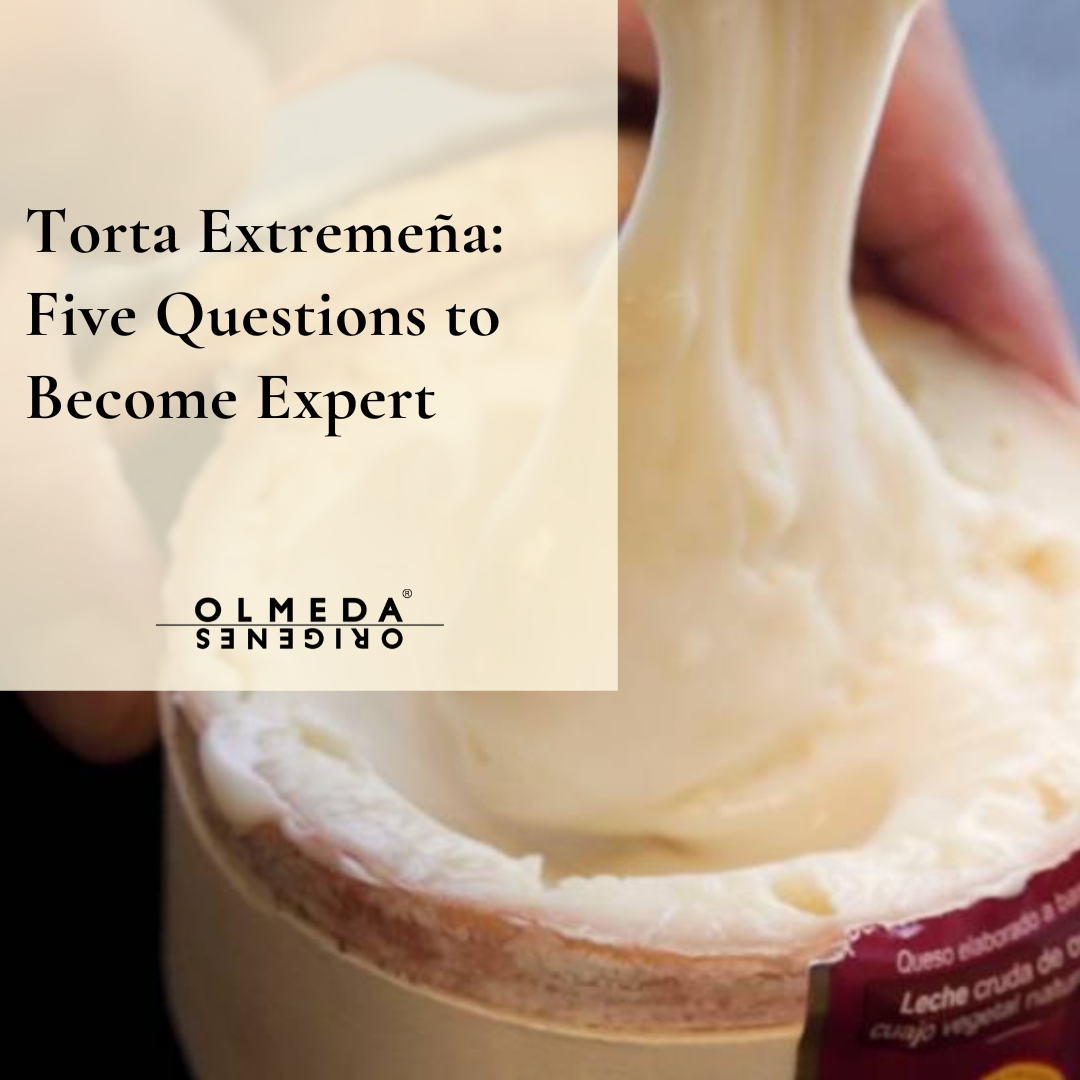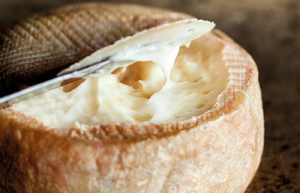
23 Jan Torta Extremeña Olmeda Orígenes: Five Questions to Become Expert
¿What is the origin of the name “torta” for this product? How is a “Torta Extremeña” defined? In which specific regions are these cakes commonly produced? What is the process of making Torta Extremeña? These are some of the questions we will clarify in this article
1. Why is it called “queso de torta”?
The cheese that we commonly refer to as “queso de torta” is crafted by coagulating sheep’s cheese with the infusion of thistle (Cynara cardunculus). This process is responsible for the separation of the milk into whey and curd, thanks to an enzymatic reaction. When the resulting cheese is slightly opened or the paste is too fluid just before draining, the force of gravity causes the cheese to deform. This results in a bulging contour and a top surface resembling a cake, hence the origin of its name.
2. What is the production process for creating this product?
Once the milk, preferably from sheep, has coagulated, the curd is cut, shaped, and then pressed to facilitate the expulsion of whey. After unmolding, the salting process takes place, either with brine or by applying salt directly, contributing to the formation of the crust. Finally, the cheese is left to mature. Interestingly, in the early days of cheese-making, when the cheese was still draining, it was used for feeding pigs. Later on, when they decided to try it for human consumption, they began wrapping it with a strip that protects the cheese’s belly and prevents the crust from breaking.
3. What’s the reason behind its distinctive aroma?
The characteristic fragrance, shared with most orange-rind cheeses like sudao and others of European origin, originates from the inoculation of the Brevibacterium linens bacteria. This bacteria, with its notable fermentative capacity, is responsible for generating volatile aldehydes that contribute to the unique aroma of many cheeses. This bacteria thrives particularly well in cheeses with high salt content, such as these cheeses.
This bacteria, which participates in the fermentation process and contributes to giving them their characteristic creamy texture, is a close relative of the bacteria associated with foot odor, explaining the similarity in smells. The emission of these effluents, primarily aldehydes, may be familiar, and due to societal conventions, they are often associated with rejection. However, it’s crucial to note that in the case of Torta del Casar, a milder and more subtle aroma is sought compared to other cheeses, emphasizing a distinctive scent more associated with sheep’s cheese.
4. What’s the best way to store a torta to bring out its best qualities?
To appreciate the full qualities of a torta, most people choose to store it in the refrigerator. However, when consumed, it may not reach its optimal creaminess. In the case of refrigeration, it is recommended to take it out in advance to allow it to gradually reach room temperature without abrupt changes. Although the ideal option is to store it at room temperature, allowing it to mature for a few days before tasting, depending on its maturity.
The use of the microwave is discouraged by experts, as some points of the cheese can reach 70 degrees, while others remain at the cold temperature of the refrigerator (8ºC), making it difficult to homogenize when stirred. Heating the fat in this way can cause the evaporation of aromas and aldehydes. When tasting the cheese at a comfortable tasting temperature, you may lose many volatile substances or they may degrade, resulting in a taste experience far from the authenticity of the cheese in its original state.
5. What’s the best way to enjoy it while eating?
The torta is best enjoyed when consumed in its entirety. If it’s for two people, a portion of 200-250 g is suitable. In the case of having a larger half-kilogram torta, you can cut it in half perpendicular to the diameter, cover the half you’re not going to eat with plastic wrap, and store it in the refrigerator to preserve its freshness. This ensures that the cheese remains in place and stays well for at least a couple of days.
6. How can you accompany it?
The Torta Extremeña is a delicious cheese that can be paired with various accompaniments to enhance its flavors. Here are some suggestions:
- Fresh Bread or Toast: Serving the Torta Extremeña with fresh bread or toast can be a classic and delightful choice. The crunchy bread complements the creaminess of the cheese.
- Regañá or Thin Slices: These are two varieties of artisanal bread products from Olmeda Orígenes, providing versatility to the Torta Extremeña by imparting great flavor and texture.
- Olives: Whether green or black, olives are a classic option that can provide a salty and textural contrast to the smoothness of the Torta Extremeña.
- Nuts: Nuts such as Marcona almonds can add texture and flavor to the gastronomic experience.
- Fig Bread: The combination of flavors between fig bread and the creaminess of the torta can be delightful. Fig bread contributes natural sweetness and a dense texture that complements the smoothness and distinctive flavor of the cheese.
Watch here the video where we show how to open and eat the second best cheese in the world!!




